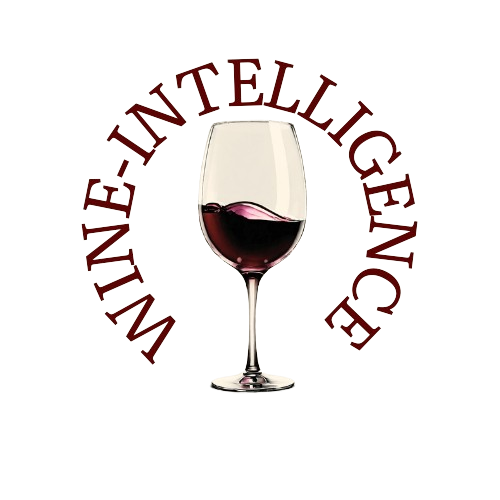The global market for distilled beverages and spirits is undergoing a pivotal period of adjustment in 2024, as highlighted by Vinetur's comprehensive report "Analysis of the Global Distilled Beverages and Spirits Market 2024: Trends, Trade, Consumption, Production and Competitive Landscape," published on May 7, 2025.
Following a slight contraction in 2023, the spirits sector continues to show restrained performance in both volume and value, influenced by shifting consumer habits, economic uncertainty, and evolving trade dynamics.
Market Contraction and Shifting Consumption Patterns
In 2023, global volumes of alcoholic beverages declined by 1%, and while overall market value rose by a modest 2%, the momentum slowed. The trend continued into 2024, with international spirits volumes again falling by around 1% in key markets—excluding locally dominant beverages like Chinese baijiu and Japanese shochu—leaving total volumes 2% below pre-pandemic levels.
Global consumption of distilled beverages reached 38.1 billion liters in 2023, with a retail value of USD 811.26 billion. This volume further dipped in 2024, especially in mature markets, as consumer priorities shifted from premiumization to value-for-money offerings. While the premium spirits boom of past years is losing traction, certain segments like tequila, ready-to-drink (RTD) cocktails, and craft spirits are defying the trend and showing steady growth. The NoLo (low- and no-alcohol) category continues to gain popularity, particularly among health-conscious younger consumers.
Trade and Production: Pressure Points and Strategic Shifts
The international trade in spirits under HS code 2208 rose slightly in 2023, reaching USD 42.9 billion—a 1.79% year-on-year increase. The United Kingdom, France, and Mexico remained the top exporters, leveraging iconic products like Scotch whisky, cognac, and tequila. On the import side, the United States, China, and Singapore led demand, driven by persistent interest in premium and craft spirits.
Nevertheless, the outlook is tempered by geopolitical tensions and the threat of trade wars, which could disrupt flows in 2025. While agreements like CAFTA-DR and UK-India bilateral negotiations offer some relief, global trade remains vulnerable.
At the manufacturing level, the estimated value of global spirits production in 2024/2025 is USD 128.9 billion. Europe, led by the UK, retains a central role, followed by the U.S., China, and India. Inflationary pressures, rising input costs, and climate-related challenges are forcing producers to integrate sustainability and innovation into operations. Despite the increase in registered distilleries—16,703 globally in 2025, with a CAGR of 6.7% since 2020—the market remains highly consolidated. Giants like Diageo, Pernod Ricard, and Suntory Holdings control over 20% of global spirits volume.
Emerging Trends and Growth Segments
While the broad market faces stagnation, several bright spots are emerging:
- Tequila and Agave-Based Spirits: These continue to outperform the general market, especially in the U.S., and are making inroads into new markets.
- Ready-to-Drink Cocktails (RTDs): Blending convenience with quality, RTDs have captured consumer interest with their portability and innovation.
- Craft and Artisanal Spirits: Small-batch and authenticity-driven, these offerings appeal to discerning consumers seeking niche experiences.
- NoLo Beverages: Riding the wellness wave, NoLo spirits and cocktails are becoming mainstays, particularly in urban and developed markets.
Corporate Strategy and M&A Activity
2024 witnessed a rebound in mergers and acquisitions (M&A), as companies aimed to consolidate positions and secure high-growth segments. Strategic divestments from underperforming brands are funding investments in premium, RTD, and NoLo categories. Private equity interest is also rising, signaling long-term confidence in the spirits sector.
Challenges and Forecast Through 2028
Several macro factors will shape the industry's trajectory in the coming years:
- Consumer Behavior: Greater scrutiny over alcohol consumption, especially in developed markets, is shifting the spotlight toward NoLo products and healthier alternatives.
- Economic Pressure: Inflation, cost volatility, and slowing disposable income growth are affecting purchase decisions and brand loyalty.
- Geopolitical Volatility: Trade disruptions and policy shifts remain a constant threat, though regional trade frameworks may help buffer some impacts.
- Sustainability: Climate change and environmental responsibility are driving investment in green technologies, resource efficiency, and transparent sourcing.
The forecast for 2023–2028 suggests a modest CAGR of 1% in both volume and value across alcoholic beverages, with growth led by emerging markets like India and China. Opportunities lie in premium tequila, RTDs, and NoLo innovations, though producers must remain agile in responding to changing market dynamics.
Source: Vinetur

